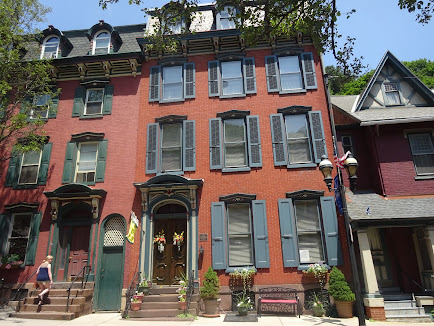Yesterday when I was ironing I thought about how much that chore has changed in the last fifty years. I still iron every week but there are only a few pieces and it doesn't take long. When I was still at home, my mom, sister, and I each spent several hours ironing every week.
Mom washed clothes at least twice a week and bedding on another day. By the time I was old enough to do laundry, her wringer washer had been replaced with an automatic Norge washer. She had a lot of trouble with it and the repairman came often enough to know us by name.
Mom starched dress shirts and dresses after they were washed. Then it was ready to go out on the wash line. My sister and I learned to hang up laundry when we were quite young. The wash basket was too heavy for us to carry so Mom set it on the wagon and we pulled it out to the wash line. We were so small we had to stand on the wagon to reach the line.
When the clothes were dry, they were brought in and folded to be put away. The things that needed to be ironed were sprinkled with water, rolled up, and stashed in a big plastic bag until we had time to iron. The sprinkling bottle was a big glass soda bottle with a corked sprinkler head stuck in the opening.
Daddy wore green uniforms for his job as the foreman at New Holland Concrete. They made cement blocks. He wore a clean uniform every day and they needed to be ironed. We ironed dresses, aprons, slips, shirts, pants, handkerchiefs, and tablecloths. Everything was made of cotton and was not presentable without ironing. We thought we really had something when Mom got a steam iron. That reduced the need for sprinkling.
Daddy's Sunday suit had to be dry cleaned, but Mom pressed his suit pants every week. First she lay a damp teatowel on the pants and ironed over it to steam the pants. Then she replaced the teatowel with a piece of newspaper and ironed over that to make a sharp crease in the pants.
One day while I was ironing Daddy's uniform pants, I boldly declared that when I get married it will be to be a man with short legs so it doesn't take so long to iron his pants. And I did too! 😀
However, by the time I got married fabrics were changing. Something called Perma-press was on the market. These new fabrics did not need ironing when they were dried in the dryer. A whole load of pants could be washed and put away without ironing. I learned to read labels when I went shopping and not buy anything that was 100% cotton.
I washed something almost every day when our children were all at home. Now I wash once a week. Starching and sprinkling were eliminated years ago. I keep a can of spray starch on hand for dresser scarves. One can lasts for years. I still hang laundry on the line whenever the weather permits, but I don't iron more than a few pieces each week.
I got the best of both worlds---a man with short legs and pants that don't need ironing.


























